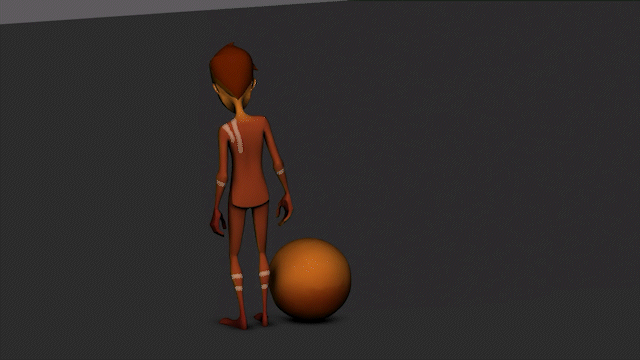Animation Mentor AN02 - “Body Mechanics” - Week 01
Hmmmmm What the heck is “Body Mechanics” you ask? According to the course description …
In Body Mechanics, dive deep into the physicality of animating bipeds, including full body walks. Begin by honing your observational skills and understanding of human anatomy in relation to posing and mechanics. Once you understand the source of realistic motion, you are ready to learn how timing and spacing choices can take your animation from realistic to stylized. Finally, add polish and shine to your animation.
That description is exciting to me! Although my goal is to create “cartoony” animation, learning the rules of how things are supposed to work is critical to breaking the rules effectively.
Looking ahead at the assignments, I’m going to be animating characters doing “exciting” things like walking and getting up out of a chair, or in the case of this week’s assignment… Stepping to the side.
One of the things I love most about studying animation is that it forces me to re-examine things I take for granted. Everyday movements are not something we normally think about, right? If someone asks you “Could you step to the left?” you just do it. They’re things we do without thinking.
And that is exactly what this first assignment is… A side step.
But the real point of the exercise is to take a character through 3 separate states…
Balanced start
Unbalanced transition
Balanced rest
The AM curriculum harps on the idea of preparation, and with good reason. The more prep work and thought you put into the scene, the easier it will go and the better it will turn out. So, the first thing I did was ask the question
“Why is my character stepping to the side?”
And the answer I came up with was
“To step over a sleeping monster without waking it up.”
Armed with a narrative, I shot a reference video of myself stepping sideways over an object.
I tried to look as if I was being careful and focused on the thing I was stepping over while being quiet. “Careful and Quiet” have a huge impact on the body language as it moves through the steps. You can see it in my feet as they come down to the ground and in my shoulders as they tighten up and then sag in relief at the end of the process.
The next step is to identify the key poses… there are 5 of them…
Start
Anticipation
Action or Passing
Reaction or Recover
Final pose
To visualize these, I pulled still frames of these key moments from the original video and retimed them to fit into the 88 frame maximum frame requirement. During this retiming, I decided to have the sleeping monster be disturbed by the action and almost wake up. That gag needs time to play out and affected the timing of all the key poses, so I ended up with this…
Because of the little relief shoulder drop thing I do at the end, there’s a few more poses than the basic 5… It looks pretty good, but ideally, I’d like a bit more time on the pause for the gag to play out, but I’m trying to be true to the required assignment length.
The next step in planning is to sketch out the poses… I probably could have skipped this step since I had such a solid reference video, but I like to make crappy sketches. The process helps me think about the shot and solve challenges before they happen. That process got me to this still…
Now I’m fiiiiiiiinally ready to jump into Maya and block out the animation with stepped keyframes. In stepped mode you’re essentially working as a “stop motion animator” because Maya doesn’t do any of the inbeteen work that makes the animation smooth. BUT that means you don’t have all those messy curves to work with, and it’s MUCH easier to make timing and movement changes to your animation.
The original assignment was to just block in the 5 critical poses, but I went a step further and added quite a few “breakdown frames” to help tell the story of the movement better. A breakdown frame is a pose that happens “in between” two key poses. They define the movement and give the viewer a much better sense of the flow of movement in the action.
Below is what I turned in for the Instructor Dana Boadway Masson first is the main camera, and then an alternate angle to help her analyze the animation…
What did I learn?
Simple movements are HARD! There is soooooooooo much subtlety to how we move and even basic movements like this have a ton of tiny details to them and capturing and stylizing those details is the difference between good and great animation. I’m hoping to become a great character animator, so getting the details right matters.
Up next is refining this motion. I’m sure I’ll have a ton of changes from the instructor, so incorporating that and then refining the motion with a few mor breakdowns and then starting in on Splining will be on tap…
More to come!






